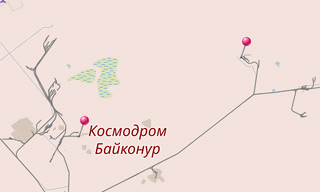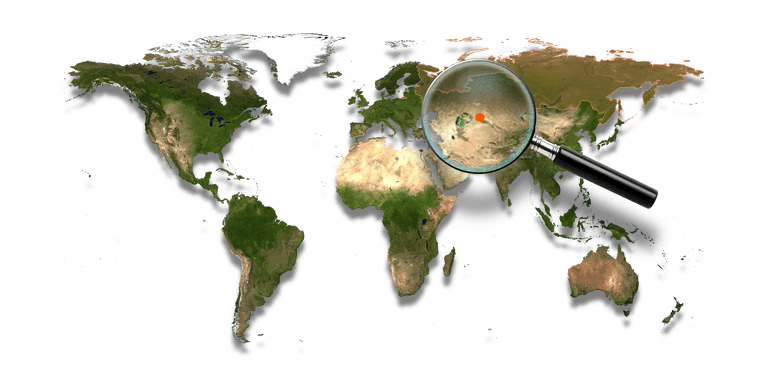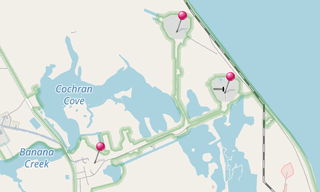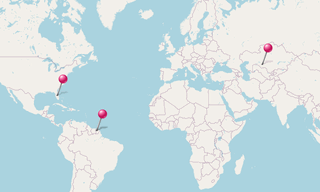The Baikonur Cosmodrome, also called Tyuratam, is the world’s first and largest operational space launch facility. It is located in the desert steppes of Kazakhstan, about 200 km east of the Aral Sea, north of the Syr Darya River, near Tyuratam railway station, at 90 m above sea level. It is leased by the Kazakh government to Russia (currently until 2050) and is managed jointly by the Russian Federal Space Agency and the Russian Space Forces.
The shape of the area leased is an ellipse, measuring 90 km east-west by 85 km north-south, with the cosmodrome at the centre. It was originally built by the Soviet Union in the late 1950s as the base of operations for its ambitious space program. Under the current Russian space program, Baikonur remains a busy space port, with numerous commercial, military and scientific missions being launched annually. Vostok 1, the first manned spacecraft in human history, was launched from one of Baikonur’s launch pads, which is presently known as Gagarin’s Launch Site.
GIOVE-B
GIOVE-B mission had the main goal of claiming the frequencies allocated to Galileo by the ITU, and had greatly improved signal generation hardware compared to GIOVE-A. It was originally built by the satellite consortium European Satellite Navigation Industries, but following re-organization of the project in 2007, the satellite prime contractor responsibility was passed to Astrium GmbH (now Airbus Defence and Space GmbH). GIOVE-B carried three atomic clocks: two rubidium standards and the first space-qualified passive hydrogen maser.
The launch took place on 27 April 2008 at 04:16 Baikonur time (22:16 UTC) aboard a Soyuz-FG/Fregat rocket provided by Starsem. The Fregat stage was ignited three times to place the satellite into orbit at 23.200 km. Giove-B reached its projected orbit 3 hours 45 minutes later and successfully deployed its solar panels.
Soyuz TMA-12
Soyuz TMA-12 was a Soyuz mission to the International Space Station (ISS) which was launched by a Soyuz FG rocket at 11:16 UTC on 8 April 2008. It docked to the Pirs module of the station on 10 April 2008. Yi So-yeon flew as a guest of the Russian Government through the Korean Astronaut Program.

-Soyuz-Rollout.hero.landscape.jpg)

-Soyuz-Rollout.jpg?w=256)
-Soyuz-Rollout.jpg?w=256)
-Arrival-in-Baikonur.jpg?w=256)
-Transport-to-Baikonur-with-Antonov-AH-124.jpg?w=256)
-Soyuz-Launch.jpg?w=256)
-Soyuz-Rollout.jpg?w=256)
-Soyuz-Launch-Day.jpg?w=256)
-Soyuz-Rollout.jpg?w=256)
-Arrival-in-Baikonur.jpg?w=256)
-Soyuz-Launch-Day.jpg?w=256)
-Mating-Block-E-on-Soyuz-Packet.jpg?w=256)
-Arrival-in-Baikonur.jpg?w=256)
-Soyuz-Launch-Day.jpg?w=256)
-Soyuz-Rollout.jpg?w=256)
-Mating-Block-E-on-Soyuz-Packet.jpg?w=256)
-Mating-Block-E-on-Soyuz-Packet.jpg?w=256)
-Soyuz-MIK112.jpg?w=256)
-Soyuz-Rollout.jpg?w=256)
-Soyuz-MIK112.jpg?w=256)
-Mating-Block-E-on-Soyuz-Packet.jpg?w=256)
-Soyuz-Launch-Day-2.jpg?w=256)
-Soyuz-Rollout.jpg?w=256)
-Transport-to-Baikonur-with-Antonov-AH-124.jpg?w=256)
-Soyuz-MIK112.jpg?w=256)
-Soyuz-MIK112.jpg?w=256)
-Soyuz-Rollout.jpg?w=256)
-Transport-to-Baikonur-with-Antonov-AH-124.jpg?w=256)
-Soyuz-MIK112.jpg?w=256)
-Soyuz-Rollout.jpg?w=256)
-Soyuz-Rollout.jpg?w=256)
-Soyuz-Rollout.jpg?w=256)
-Transport-to-Baikonur-with-Antonov-AH-124.jpg?w=256)
-Soyuz-Rollout.jpg?w=256)
-Soyuz-MIK112.jpg?w=256)
.jpg?w=256)
-Soyuz-MIK112.jpg?w=256)
-Soyuz-Launch.jpg?w=256)
-Soyuz-Rollout.jpg?w=256)
-Mating-Block-E-on-Soyuz-Packet.jpg?w=256)
-Soyuz-MIK112.jpg?w=256)
-Soyuz-Launch.jpg?w=256)
-Soyuz-Rollout.jpg?w=256)
-Soyuz-MIK112.jpg?w=256)
-Mating-Block-E-on-Soyuz-Packet.jpg?w=256)
-Transport-to-Baikonur-with-Antonov-AH-124.jpg?w=256)
-Soyuz-Rollout.jpg?w=256)
-Soyuz-Launch-Day.jpg?w=256)
-Soyuz-Launch.jpg?w=256)
.hero.jpg?w=320)

-Soyuz-Rollout.hero.jpg?w=320)

-Space-Shuttle-Columbia.hero.jpg?w=320)

-Soyuz-Rollout.hero.jpg?w=320)

-Soyuz-Launch-Day.jpg?w=256)
-Soyuz-Launch-Day.jpg?w=256)
-Mating-Block-E-on-Soyuz-Packet.jpg?w=256)
-Transport-to-Baikonur-with-Antonov-AH-124.jpg?w=256)
-Arrival-in-Baikonur.jpg?w=256)
.jpg?w=256)
-Mating-Block-E-on-Soyuz-Packet.jpg?w=256)
-Soyuz-Rollout.jpg?w=256)
-Soyuz-Rollout.jpg?w=256)
-Soyuz-Launch.jpg?w=256)
-Mating-Block-E-on-Soyuz-Packet.jpg?w=256)
-Arrival-in-Baikonur.jpg?w=256)
-Mating-Block-E-on-Soyuz-Packet.jpg?w=256)
-Mating-Block-E-on-Soyuz-Packet.jpg?w=256)
.jpg?w=256)
-Soyuz-MIK112.jpg?w=256)
-Soyuz-MIK112.jpg?w=256)
.jpg?w=256)
-Soyuz-Rollout.jpg?w=256)
-Soyuz-Launch-Day.jpg?w=256)
-Arrival-in-Baikonur.jpg?w=256)
-Transport-to-Baikonur-with-Antonov-AH-124.jpg?w=256)
.jpg?w=256)
-Soyuz-Launch-Day.jpg?w=256)
-Soyuz-Rollout.jpg?w=256)
-Arrival-in-Baikonur.jpg?w=256)
-Soyuz-Rollout.jpg?w=256)
-Soyuz-Rollout.jpg?w=256)
-Soyuz-Launch-Day.jpg?w=256)
-Soyuz-Rollout.jpg?w=256)
-Mating-Block-E-on-Soyuz-Packet.jpg?w=256)
-Transport-to-Baikonur-with-Antonov-AH-124.jpg?w=256)
-Transport-to-Baikonur-with-Antonov-AH-124.jpg?w=256)
-Arrival-in-Baikonur.jpg?w=256)
-Soyuz-Rollout.jpg?w=256)
-Soyuz-Rollout.jpg?w=256)
-Soyuz-Rollout.jpg?w=256)
-Soyuz-Launch.jpg?w=256)
-Transport-to-Baikonur-with-Antonov-AH-124.jpg?w=256)
-Transport-to-Baikonur-with-Antonov-AH-124.jpg?w=256)
-Mating-Block-E-on-Soyuz-Packet.jpg?w=256)
-Soyuz-Rollout.jpg?w=256)
-Mating-Block-E-on-Soyuz-Packet.jpg?w=256)
.jpg?w=256)
-Soyuz-Launch-Day.jpg?w=256)
-Soyuz-MIK112.jpg?w=256)
-Soyuz-Launch.jpg?w=256)
-Soyuz-Rollout.jpg?w=256)
-Soyuz-Launch-Day-2.jpg?w=256)
-Soyuz-Rollout.jpg?w=256)
-Transport-to-Baikonur-with-Antonov-AH-124.jpg?w=256)
-Soyuz-Rollout.jpg?w=256)
-Transport-to-Baikonur-with-Antonov-AH-124.jpg?w=256)
-Transport-to-Baikonur-with-Antonov-AH-124.jpg?w=256)
-Soyuz-Rollout.jpg?w=256)
-Soyuz-Launch-Day.jpg?w=256)
-Soyuz-Rollout.jpg?w=256)
.jpg?w=256)
-Transport-to-Baikonur-with-Antonov-AH-124.jpg?w=256)
-Arrival-in-Baikonur.jpg?w=256)
-Soyuz-Rollout.jpg?w=256)
-Soyuz-Rollout.jpg?w=256)
.jpg?w=256)
-Mating-Block-E-on-Soyuz-Packet.jpg?w=256)
-Soyuz-Rollout.jpg?w=256)
-Soyuz-Rollout.jpg?w=256)
-Transport-to-Baikonur-with-Antonov-AH-124.jpg?w=256)
-Soyuz-Launch-Day.jpg?w=256)
-Mating-Block-E-on-Soyuz-Packet.jpg?w=256)
-Soyuz-Rollout.jpg?w=256)
-Soyuz-Rollout.jpg?w=256)
-Soyuz-Launch.jpg?w=256)
-Soyuz-Rollout.jpg?w=256)
-Soyuz-Rollout.jpg?w=256)
-Soyuz-MIK112.jpg?w=256)
-Soyuz-Launch-Day.jpg?w=256)
-Arrival-in-Baikonur.jpg?w=256)
-Arrival-in-Baikonur.jpg?w=256)
.jpg?w=256)
-Soyuz-Rollout.jpg?w=256)
-Mating-Block-E-on-Soyuz-Packet.jpg?w=256)
-Transport-to-Baikonur-with-Antonov-AH-124.jpg?w=256)
-Transport-to-Baikonur-with-Antonov-AH-124.jpg?w=256)
-Arrival-in-Baikonur.jpg?w=256)
.jpg?w=256)
-Soyuz-Launch-Day-2.jpg?w=256)
-Soyuz-Rollout.jpg?w=256)
-Soyuz-Launch.jpg?w=256)
.jpg?w=256)
.jpg?w=256)
-Soyuz-Rollout.jpg?w=256)
-Soyuz-Rollout.jpg?w=256)
-Soyuz-Rollout.jpg?w=256)
-Soyuz-Launch-Day.jpg?w=256)
-Soyuz-Rollout.jpg?w=256)
-Soyuz-Launch-Day.jpg?w=256)
-Soyuz-Rollout.jpg?w=256)
-Soyuz-Launch-Day-2.jpg?w=256)
-Transport-to-Baikonur-with-Antonov-AH-124.jpg?w=256)
-Soyuz-MIK112.jpg?w=256)
-Soyuz-Launch.jpg?w=256)
-Soyuz-MIK112.jpg?w=256)
.jpg?w=256)
-Transport-to-Baikonur-with-Antonov-AH-124.jpg?w=256)
-Arrival-in-Baikonur.jpg?w=256)
-Mating-Block-E-on-Soyuz-Packet.jpg?w=256)
.jpg?w=256)
-Soyuz-Launch-Day-2.jpg?w=256)
-Soyuz-Rollout.jpg?w=256)
-Arrival-in-Baikonur.jpg?w=256)
-Soyuz-Rollout.jpg?w=256)
-Soyuz-Rollout.jpg?w=256)
.jpg?w=256)
-Soyuz-Launch-Day.jpg?w=256)
-Soyuz-Launch.jpg?w=256)